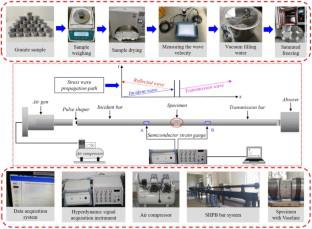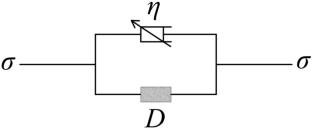Characterization and constitutive modeling of the high strain rate behavior of granite at low temperatures
Abstract
A split Hopkinson pressure bar (SHPB) was used to characterize the high-strain rate behavior of saturated and frozen granite specimens. The effects of low temperatures and strain rates on dynamic mechanical response and failure behavior were investigated. The damage constitutive model of granite was established, considering both strain rate effect and low-temperature effect. The damage constitutive relationship took into account the statistical damage model based on Weibull distribution and nonlinear viscoelastic behavior. Results show that the dynamic compressive strength of the saturated and frozen granite at low temperatures (−20 °C to 15 °C) generally increases first and then decreases with the decrease of temperature. The peak strain decreases with the decrease of temperature and the peak strain at low temperatures (0 °C to −20 °C) decreases more than that at 15 °C. The dynamic Young’s modulus of the samples shows an increasing trend from 0 °C to −20 °C, and the range of variation decreases with the decrease of temperature. At low temperature, the brittle characteristics of saturated granite are more pronounced due to water-ice phase change and cold shrinkage of the rock matrix, while the ductility is gradually reduced. The modeling results on the stress-strain relationships are consistent with experimental data. It is verified that the constitutive relationship can describe the high strain rate characteristics of saturated frozen granite.



 求助内容:
求助内容: 应助结果提醒方式:
应助结果提醒方式:


